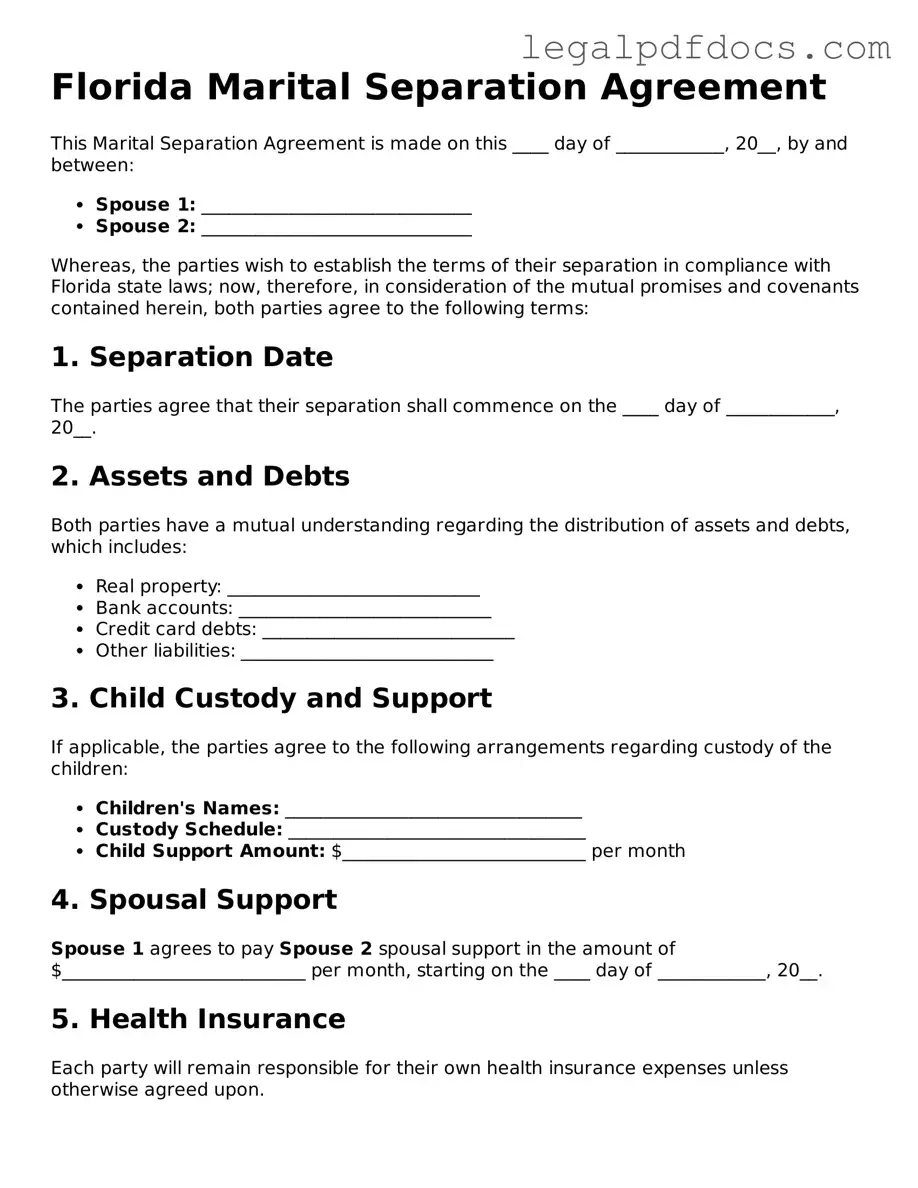Official Marital Separation Agreement Form for Florida
A Florida Marital Separation Agreement is a legal document that outlines the terms and conditions agreed upon by spouses who wish to live separately while remaining legally married. This form helps clarify issues such as property division, child custody, and financial responsibilities, ensuring both parties have a clear understanding of their rights and obligations. If you're considering a separation, it's important to have a well-drafted agreement in place.
Ready to take the next step? Fill out the form by clicking the button below.
Open Marital Separation Agreement Editor Here
